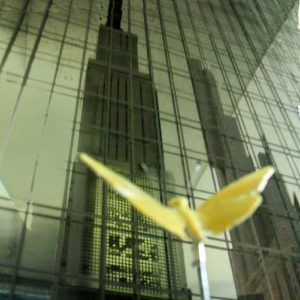Images of nature and nature of images
November 25 – December 10, 2014
*Closed on Thanksgiving Day
Curated by Stefania Carrozzini
Onishi Project: 521 West 26th Street New York, NY 10001
t. 212.695.8035 www.onishiproject.com
Gallery hours: Tuesday – Saturday 11:00 a.m. – 6:00 p.m.
Opening Reception: Tuesday, November 25, 6:00 – 8:00 p.m.
Artists:
Remo Bresciani / Jole Caleffi / Adriana Collovati / Susi Lamarca / Maria Pia Patriarca / Anya Rubin
Clara Scarampella Lombardi / Antonio Russo / Gio Sciello / Dean Stuart Warren / Susi Zucchi
“Image of Nature and Nature of the Images”
This is the title of the text which the critic Pierre Restany wrote in 1982 for the catalogue of Clara Scarampella.
A mirror concept, symmetrical, an apparently ambiguous phrase, yet which in reality bears all the essence of the history of art, and that is the destiny of representation, the deceptiveness of the image, the language and the dimension of the immaterial, the feeling for the ephemeral. Herein lies the mother of all questions, in other words: what is the nature of the image? And then, which are its innermost meanings? Here the term image is used in two mirror-like meanings of nature naturans, beyond all descriptive purposes and nature as a basis, metaphysical reality, the last source from where all things spring forth. The problem is always how to communicate the truth by means of the illusory, yes because an image is always pretence. However, to communicate the truth about ourselves we must be free. And art in all its guises is the history of the freedom to strive to express a greater reality, of universal scope.
When thought takes shape and becomes an image it reveals its aesthetic aspect, autonomous, detached from matter and therefore completely philosophical. That which Pierre Restany defined as: “the premonitory symptoms of the victory of the spiritual over matter, of alchemists over mathematicians, of the advent of humanism of synthesis which maintains the double meaning of things”. The nature of the image goes beyond technique and partakes of that invisible harmony which is superior to the visible one. Designing and planning transferred to matter open as many new windows of interpretation as are the eyes of the onlookers. It is on this journey, of infinite formal and perceptive outcomes, that the work of art itself is situated, just as it was conceived and thought up by the artist. Therefore, a process of mutation of the image is always taking place and this process is growing, and tied to the experience of the subject. The forms of art have evolved and now it is the language of the images which lays the law. Immersed as we are in this ultra-materialistic epoch, what counts is who uses such language and to what end. The image is a living body it is not an inert object to be contemplated in a disinterested way. It is an entity, energy which draws us to it or repels us, enchants us or offends us.
Nowadays, more than ever we feel the need to understand our original nature, that Pierre Restany defined in his manifesto on integral naturalism “the universalization of the perceptive consciousness, of a Self who embraces the World and becomes one with it” and this planetary yearning may still be the guiding line in the chaos of art today.
Stefania Carrozzini

